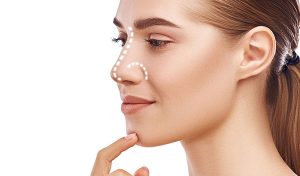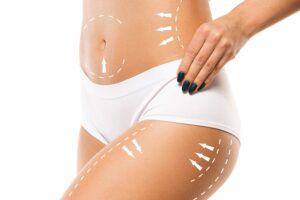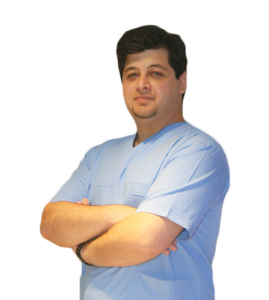
Popular Plastic Surgeries
Plastic surgery has evolved significantly over the past few decades, becoming more accessible, safer, and socially accepted. What was once reserved for celebrities and the elite is now common across many demographics.
Plastic surgery has evolved significantly over the past few decades, becoming more accessible, safer, and socially accepted. What was once reserved for celebrities and the elite is now common across many demographics.
Among the wide variety of cosmetic procedures available today, a few stand out for their popularity and impact: rhinoplasty, hair transplant, liposuction, and breast augmentation (commonly referred to as a “boob job”). This article explores these procedures in detail, highlighting what they are, how they’re performed, risks involved, and why so many people choose them.
Costs & facilities




Treatment Visa (T-visa)
Surgery, Lab tests, Medical photography, Medications, Surgeon visits
VIP Transfer (Airport/Hotel/Clinic), Medical Guide, Travel Insurance, Sim-card and Internet
3 to 5 Star Hotels Near Your Clinic/Hospital



Rhinoplasty: 8 days
Boob job: 7-8 days
Liposuction: 5 days
Hair Transplant: 4 days
Rhinoplasty: 1-2 hr.
Boob job: 1-2 hr.
Liposuction: 1-2 hr.
Hair Transplant: 4-12 hr.
Rhinoplasty: General
Boob job: General
Liposuction: General
Hair Transplant: Local
Rhinoplasty: 2-3 weeks
Boob job: 1-2 months
Liposuction: 1-2 weeks
Hair Transplant: 1 week
Rhinoplasty: None
Boob job: 1 day
Liposuction: 1 day
Hair Transplant: None
10 days
Rhinoplasty, often called a nose job, is a surgical procedure aimed at reshaping or resizing the nose. It can be performed for cosmetic reasons or medical issues such as breathing difficulties, deviated septum, or congenital deformities.
Rhinoplasty involves making incisions—usually inside the nostrils (closed rhinoplasty) or across the columella (open rhinoplasty)—to access the bone and cartilage beneath. The surgeon then reshapes the structure of the nose, either removing or adding tissue to achieve the desired look or function.
Recovery typically takes 1–2 weeks for initial healing, but full results may take up to a year as swelling gradually subsides. Risks include infection, bleeding, scarring, and dissatisfaction with the results, which may require revision surgery.
Rhinoplasty remains one of the most sought-after cosmetic surgeries due to its dramatic effect on facial balance and symmetry. It is especially popular among younger individuals looking to refine their appearance.
A hair transplant is a procedure that moves hair from areas with abundant growth (usually the back of the scalp) to balding or thinning areas. It’s a common treatment for male-pattern baldness but is also used for women with hair thinning or individuals with hair loss from injuries.
FUT (Follicular Unit Transplantation): A strip of scalp is removed, and individual follicles are harvested.
FUE (Follicular Unit Extraction): Individual follicles are removed directly from the scalp using a punch tool.
Recovery is typically mild, with scabbing and redness subsiding within a week. Results become noticeable within 6–12 months. Risks include infection, scarring, unnatural-looking hair growth, and shock loss (temporary hair shedding).
Hair is closely tied to youth and identity, especially for men. The natural results and relatively non-invasive nature of modern hair transplants make it an increasingly popular solution for hair loss.
Liposuction is a body contouring procedure designed to remove excess fat deposits from specific areas such as the abdomen, thighs, arms, back, and neck. It’s not a weight-loss solution but a method for reshaping the body.
Small incisions are made in the treatment area, and a thin tube called a cannula is inserted to break up and suction out fat cells. Techniques include tumescent liposuction, ultrasound-assisted liposuction, and laser-assisted liposuction.
Swelling, bruising, and soreness are common for the first few weeks. Compression garments are typically worn to aid healing. Risks include irregular contours, infection, nerve damage, and blood clots.
Liposuction appeals to those who struggle with stubborn fat that doesn’t respond to diet or exercise. It offers immediate body sculpting with long-lasting results when combined with a healthy lifestyle.
Breast augmentation, informally known as a “boob job,” involves the surgical placement of implants or fat to increase breast size, improve shape, or restore volume lost due to weight loss, pregnancy, or aging.
Silicone Implants: Filled with silicone gel for a natural feel.
Saline Implants: Filled with sterile salt water; slightly firmer.
Fat Transfer: Uses liposuction to take fat from other parts of the body and inject it into the breasts.
Most patients return to normal activities within a week, although strenuous activity should be avoided for 4–6 weeks. Risks include implant rupture, capsular contracture (scar tissue hardening around the implant), infection, and changes in nipple sensation.
Breast augmentation is consistently one of the top cosmetic surgeries globally. It boosts confidence and body image for many individuals and offers customizable options for size and shape.
Plastic surgery is generally safe when performed by a board-certified plastic surgeon in an accredited facility. However, like any surgical procedure, it carries risks such as infection, scarring, bleeding, and anesthesia complications. Always research your surgeon’s credentials and discuss potential risks before deciding.
Recovery time varies depending on the procedure and individual healing factors. Minor surgeries like rhinoplasty or liposuction may require 1–2 weeks, while more extensive procedures like breast augmentation may need 4–6 weeks. Full results can take several months as swelling subsides and the body heals.
Most surgeries involve incisions, so some scarring is inevitable, but skilled plastic surgeons use techniques to minimize and hide scars in natural skin folds or less-visible areas. Over time, scars typically fade and become less noticeable with proper care.
Most results from plastic surgery are long-lasting, and some (like rhinoplasty or fat removal via liposuction) can be permanent. However, aging, lifestyle habits, weight changes, or pregnancy can affect results. Maintenance procedures or touch-ups may be required over time.
Yes, many patients choose to combine procedures (like a tummy tuck with liposuction or rhinoplasty with chin augmentation) to reduce overall downtime and anesthesia exposure. Your surgeon will evaluate your health and goals to determine if combining procedures is safe for you.
